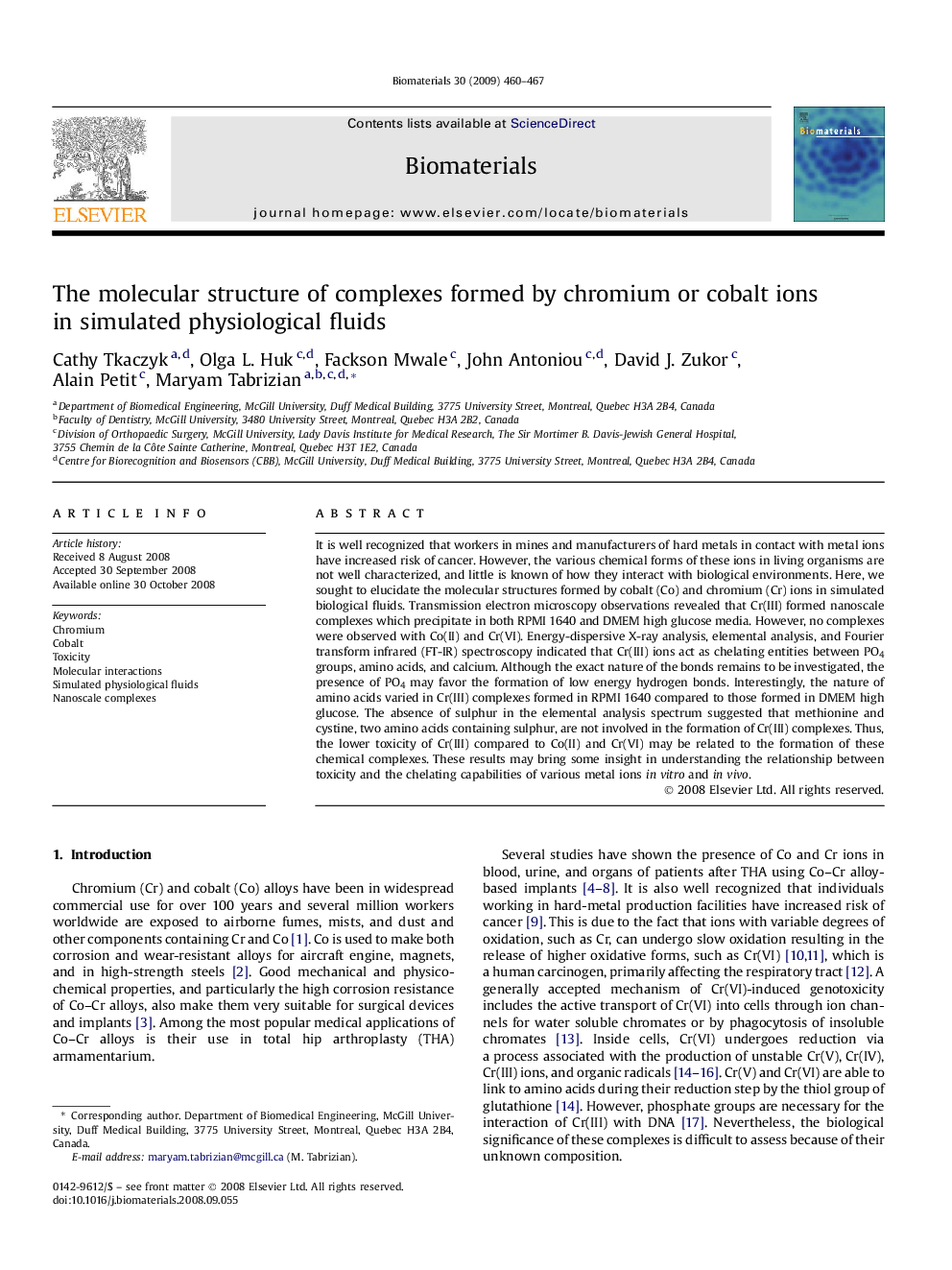| کد مقاله | کد نشریه | سال انتشار | مقاله انگلیسی | نسخه تمام متن |
|---|---|---|---|---|
| 10818 | 703 | 2009 | 8 صفحه PDF | دانلود رایگان |

It is well recognized that workers in mines and manufacturers of hard metals in contact with metal ions have increased risk of cancer. However, the various chemical forms of these ions in living organisms are not well characterized, and little is known of how they interact with biological environments. Here, we sought to elucidate the molecular structures formed by cobalt (Co) and chromium (Cr) ions in simulated biological fluids. Transmission electron microscopy observations revealed that Cr(III) formed nanoscale complexes which precipitate in both RPMI 1640 and DMEM high glucose media. However, no complexes were observed with Co(II) and Cr(VI). Energy-dispersive X-ray analysis, elemental analysis, and Fourier transform infrared (FT-IR) spectroscopy indicated that Cr(III) ions act as chelating entities between PO4 groups, amino acids, and calcium. Although the exact nature of the bonds remains to be investigated, the presence of PO4 may favor the formation of low energy hydrogen bonds. Interestingly, the nature of amino acids varied in Cr(III) complexes formed in RPMI 1640 compared to those formed in DMEM high glucose. The absence of sulphur in the elemental analysis spectrum suggested that methionine and cystine, two amino acids containing sulphur, are not involved in the formation of Cr(III) complexes. Thus, the lower toxicity of Cr(III) compared to Co(II) and Cr(VI) may be related to the formation of these chemical complexes. These results may bring some insight in understanding the relationship between toxicity and the chelating capabilities of various metal ions in vitro and in vivo.
Journal: Biomaterials - Volume 30, Issue 4, February 2009, Pages 460–467